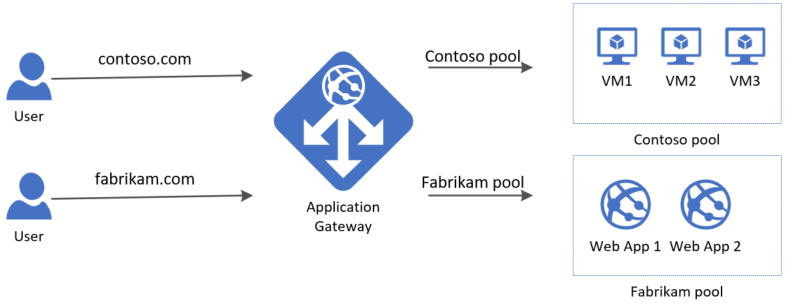
This article will give you a brief explanation of the World Wide Web (WWWW). It's an information platform that allows users to find documents and web resources online. Hypertext transfer protocol is (HTTP), webserver and Hypertext are also covered. Having a basic understanding of these terms will help you navigate the Internet.
Hypertext
Hypertext is literary and semiotic term derived from the metatext concept. Vannevar Bush, in his 1945 book As We May Think, introduced the concept of hypertext. Douglas Engelbart's NLS was later developed, as well as Ted Nelson’s Project Xanadu. Both of these projects included the concept hypertext. Both are considered to be precursors of what would become the World Wide Web. However, the World Wide Web Consortium maintains that hypertext did not appear until the mid-1990s.
Hypertext, which was originally used to describe linking of documents, is still a major component of World Wide Web. Hypertext may contain multimedia documents as well as speech and video. Tim Berners Lee called the World Wide Web "hypermedia".

Hypermedia
Hypermedia can be described as information in any form, including text, images, music and computer software. This diversity gives rise to a different kind of literacy than traditional publications, films, and magazines. Hypermedia offers more variety and interactive capabilities, which allow people to interact directly with many sources of information. Hypermedia has many other uses. It can be used to help the visually impaired and empower people with limited literacy.
Hypermedia is a way to link nonlinearly distributed data. It can be used to replace many of the traditional methods.
Hypertext transfer protocol
Hypertext Transfer Protocol (HTTP) is the protocol used to exchange data over the World Wide Web. Browsers and web servers communicate via HTTP, and each sends and receives requests. URLs for web pages begin with "http ://".". This protocol is the basis of the World Wide Web.
It's a stateless protocol for distributed information systems, hypermedia, and other applications. It's the backbone of data communication over the World Wide Web. This protocol is also called hypertext. It allows logical links to be made between documents.

Web server
The World Wide Web is a network of websites that uses web servers to store and distribute information to users. These websites are connected to one another using a network. A web server stores information in a variety of formats, including text, tampilan gambar, audio, and video.
A webserver receives information from a client (a machine), then processes it and returns it the client (the web browser). It communicates with both clients (a computer) and servers (a web browser) using special protocols. One of the most important communication protocols between clients and servers is HTTP. HTTP is used by clients and servers to exchange data. HTTP can also be used to send or receive HTTP requests.
FAQ
Can I create my own website with HTML & CSS?
Yes! You should be able to create a website if you have been following the instructions.
Now that you know how to create the structure of a website, you'll also need to learn some HTML and CSS coding.
HTML stands to represent HyperText Markup Language. It is similar to writing a recipe. It would include ingredients, instructions, as well as directions. HTML allows you to indicate to a computer which portions of text are bold, italicized and underlined. It also lets you know which part of the document is linked. It is the language of documents.
CSS stands for Cascading Style Sheets. Think of it like a style sheet for recipes. Instead of listing each ingredient and instructing, you can write down general guidelines for font sizes, colors and spacing.
HTML tells the browser how a page should look; CSS tells it what to do.
You don't have to be a prodigy if you don’t get the terms. Follow the tutorials below, and you'll soon be making beautiful websites.
What is a website static?
A static website contains all content stored on a server that visitors can access via web browsers.
The term "static", refers to the absence or modification of images, video, animations, and so forth.
This type of site was originally developed for use in corporate intranets but has since been adopted by individuals and small businesses who want simple websites without the complexity of custom programming.
Because they are easier to maintain, static sites have been growing in popularity. Static sites are easier to maintain and update than fully-featured websites with multiple components (such as blogs).
They also load more quickly than dynamic counterparts. They are great for people who use mobile devices and have slow Internet connections.
Additionally, static websites are safer than dynamic sites. You can't hack into a static site. Hackers have only access to data stored in a database.
There are two main options for creating a static website.
-
Use a Content Management System (CMS).
-
How to create a static HTML website
It all depends on what you need. If you're new to creating websites, I recommend using a CMS.
Why? Because it gives you complete control over your website. A CMS means that you don't have to hire someone to set up your website. Upload files to the website server.
It is possible to still learn how code can be used to create static websites. It will take some time to learn to program.
How To Create A Static Website
To create your first static website, you'll need to choose between two options:
-
Content Management System, also known as WordPress. WordPress: Download this software and install it to your computer. This software can then be used to create an indispensable website.
-
A static HTML website is created by you. If you already know HTML, it is simple to do.
Consider hiring an expert to build your large website.
Start with option 2.
Statistics
- It enables you to sell your music directly on your website and keep 100% of the profits. (wix.com)
- At this point, it's important to note that just because a web trend is current, it doesn't mean it's necessarily right for you.48% of people cite design as the most important factor of a website, (websitebuilderexpert.com)
- It's estimated that in 2022, over 2.14 billion people will purchase goods and services online. (wix.com)
- The average website user will read about 20% of the text on any given page, so it's crucial to entice them with an appropriate vibe. (websitebuilderexpert.com)
- When choosing your website color scheme, a general rule is to limit yourself to three shades: one primary color (60% of the mix), one secondary color (30%), and one accent color (10%). (wix.com)
External Links
How To
How to choose one CMS from another?
In general, there are two types of Content Management System (CMS) Web Designers use Static HTML and Dynamic CMS. WordPress is the most used CMS. Joomla is a great CMS to use if you want your website to look professional and well-organized. A powerful open-source CMS allows you to implement any website design without coding knowledge. It's easy to install and configure. Joomla is available in thousands of pre-made extensions and templates so that you don't have the need to hire someone to develop your site. Joomla is available for free download. Joomla is an excellent choice for your next project.
Joomla is a powerful tool that makes it easy to manage all aspects of your website. Joomla offers many features, such as a drag and drop editor, multiple templates support, image manager blog management, news feed, eCommerce, and a blog management. Joomla is an ideal choice for anyone wanting to build a website, without needing to know how to code.
Joomla supports all devices. Joomla makes it easy to create websites for different platforms.
There are many reasons that Joomla is preferable to WordPress. There are many reasons people prefer Joomla over WordPress.
-
Joomla is Open Source Software
-
Easy to Install and Configure
-
You will find thousands of ready-made extensions and templates
-
Free to Download and Use
-
Supports Almost All Devices
-
The Powerful Features
-
Great Support Community
-
Very Secure
-
Flexible
-
Highly customizable
-
Multi-Lingual
-
SEO friendly
-
Responsive
-
Social Media Integration
-
Mobile Optimized